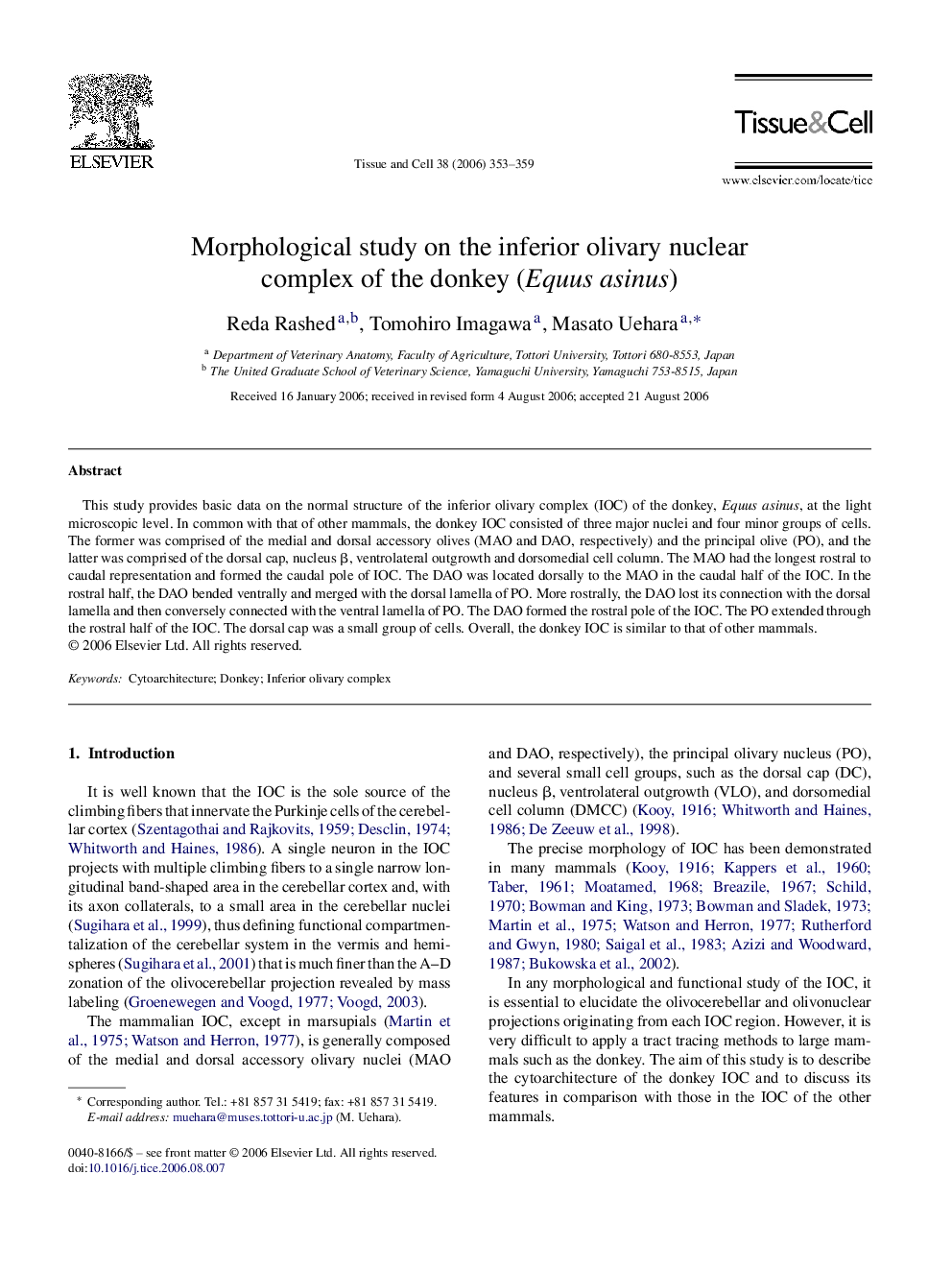| Article ID | Journal | Published Year | Pages | File Type |
|---|---|---|---|---|
| 2204110 | Tissue and Cell | 2006 | 7 Pages |
This study provides basic data on the normal structure of the inferior olivary complex (IOC) of the donkey, Equus asinus, at the light microscopic level. In common with that of other mammals, the donkey IOC consisted of three major nuclei and four minor groups of cells. The former was comprised of the medial and dorsal accessory olives (MAO and DAO, respectively) and the principal olive (PO), and the latter was comprised of the dorsal cap, nucleus β, ventrolateral outgrowth and dorsomedial cell column. The MAO had the longest rostral to caudal representation and formed the caudal pole of IOC. The DAO was located dorsally to the MAO in the caudal half of the IOC. In the rostral half, the DAO bended ventrally and merged with the dorsal lamella of PO. More rostrally, the DAO lost its connection with the dorsal lamella and then conversely connected with the ventral lamella of PO. The DAO formed the rostral pole of the IOC. The PO extended through the rostral half of the IOC. The dorsal cap was a small group of cells. Overall, the donkey IOC is similar to that of other mammals.
